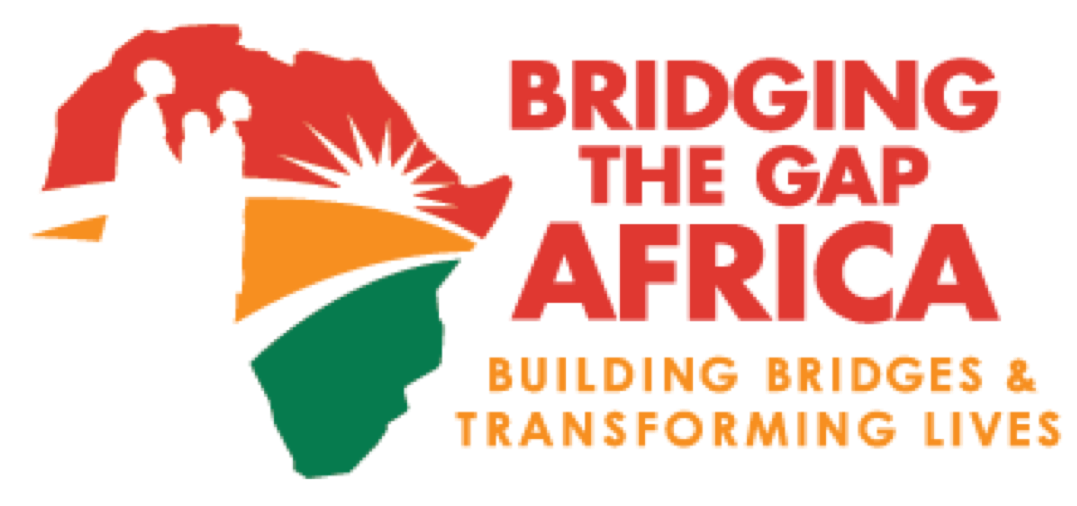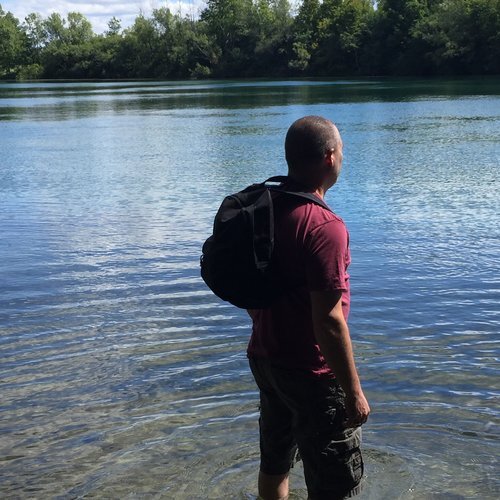Footbridges Improve Community Access to Health Care
It was the day of the long awaited opening ceremony for a new footbridge in West Pokot, Kenya, and people were coming from all over the region to celebrate the new bridge. While the goat was being prepared we had the opportunity to speak with the local Chief as he explained several social benefits that would be provided by the new bridge.
One specific social benefit stood out to us that day as the Chief explained how there is a local traveling medical team that provides much needed health care to the ‘far side’ of the river. In the dry months there was a shallow section of the river where the medical team was able to walk through to access the communities on the far side; however, the Chief went on to say that in the rainy months the medical team was not able to cross the river due to the high flows and strong currents. Now the rainy season in this area also corresponds to a time of year in which there is an increase in the number of people that contract malaria. Malaria is typically treatable with access to health care, but without access to health care malaria can easily be fatal. That day the Chief explained that the community was incredibly grateful that their new bridge would enable full, year round, access to medical care.
Tim Windsor and Plinio Morita have completed river crossings to help raise awareness for this weeks’ social impact.
•••
Over the past 13 years, I have spent much of my time creating processes and tools to increase access to same-day health care in the Niagara Region in Ontario, Canada. I have to admit, that none of my planning and strategy sessions included mapping out the local river system and making sure our patients could safely cross them to get to our Clinics. My world, is a “first world”, a driving world - not a walking world.
Here I go ... surveying the river and summoning up the courage to enter into the “Walking World” – Tim Windsor
Recently, on a sunny Friday afternoon I parked my car, opened my door, and stepped into the “walking world”, into the … “I must cross a river because I need to get to a Medical Clinic kind of world.” As I stood on the bank of the Welland River in Niagara Falls, I recognized that I had no idea what was ahead of me or how entering into this wet, shadowy, and much more worrisome world would affect me.
Right now, in the safety and comfort of your office, your home, or your favorite local coffee shop you can walk into this world with me. Just watch the video of my river crossing and allow this firsthand, GoPro Head Cam experience to connect your heart to the plight of thousands of people for whom this experience is an everyday reality.
BE A BRIDGE Walking World Fundraiser River Crossing - i360 PCN BTGA from Fervesco on Vimeo.
Now that we have crossed this river together, what are you thinking?
What are you feeling?
Here are my lasting impressions:
First, you don’t get to choose your river, it choses you. I wanted to cross a knee deep, walkable river but I couldn’t find any in my local area. So, I sucked it up and said, “if I was born in Kenya ‘my river’ would be the river in my community”. If it’s a barrier between me and the health care I need for myself or my family, I am going in and across it.”
Second, if I had to battle a hippo or crocodile in that river and not just fight my own fears and fatigue, I would not be typing this blog today.
And lastly, although this experience was for a great cause and as real as I want it to get, quite honestly, I never want to live in a place where I “have to” do this to get health care. My world, is a “first world”, a driving world - not a walking world, and I appreciate that more today than I did before I entered into the wet, shadowy, and much more worrisome world called the Welland River.
Tim Windsor, Director of Clinical Services
Primary Care Niagara
•••
The World Health Organization Constitution enshrines “…the highest attainable standard of health is a fundamental right of every human being.” Providing healthcare to remote communities in Africa and ensuring that their care is up to the standard of every other community in the region should be the goal.
However, how do you provide such level of care when communities and their health care providers are separated by a river? Strong currents, wild animals, and the simple fact that medication supplies can get wet are just a few of the numerous barriers that will limit the delivery of care.
From a patient's perspective, imagine yourself coming back from work and not feeling well. You decide that it is time for a visit to the local health center. However, you feel pretty dizzy and you are not able to walk there by yourself. A family member decides to help you along the way. However, as you are walking towards the health center, you realize the two of you will not be able to cross the river due to your debilitated condition as your company will not be able to drag you through the currents…
Now, let’s look at the other side of healthcare delivery.
You were not able to reach the health center, so they send a healthcare provider to help you across the river. The nurse coming to your aid now has to cross that same river, but carrying a supply bag with her that contains sensitive electronic equipment, sterile medical supplies, and dry medications. Definitely not an easy task.
We definitely take bridges for granted. Let's help these remote communities build bridges to increase their access to health care.
Having worked in healthcare for several years, I have been exposed to several models of community care and home care, where care teams deliver basic care to remote communities either to the patients’ home or in community health centers. In order to gain appreciation to the amazing work being delivered by these healthcare professionals, I had to experience the challenge of trying to reach health centers without the benefit of a bridge.
Crossing the river was eye-opening and helped me realize how lucky we are to have bridges around us.
Therefore, supporting the Bridging the Gap Africa BE A BRIDGE Fundraiser, I challenged myself to access the Grand River Freeport Campus in Kitchener, Canada, without using any bridges. I live and work on one side of the Grand River, but the new health center lies on the other margin of the river.
I wonder if I would be able to cross this river with a debilitated family member.
Getting across the river was not a big challenge per se, but it helped me visualize and understand the difficulties of trying to deliver (or access) healthcare in the absence of bridges. I was crossing the river by myself, but if I had to carry a family member or a large bag of supplies, this relatively simple task could have become a disaster.
Finally at the Grand River Freeport site.
Wet, but alive.
We normally take the benefits of living in a developed country for granted, but let’s not forget without basic infrastructure such as bridges, accessing and delivering healthcare would be extremely challenging. Let’s acknowledge the volunteers and workers that deliver care in Africa even in such limited conditions, and at the same time, let’s donate to the BE A BRIDGE Fundraiser so that Bridging the Gap Africa can help these remote communities build bridges to increase their access to health care.
Plinio Pelegrini Morita, PhD PEng
Assistant Professor
J.W. Graham Information Technology Emerging Leader Chair in Applied Health Informatics
School of Public Health and Health Systems, University of Waterloo
•••
Will you BE A BRIDGE and donate today to help increase access to healthcare?








